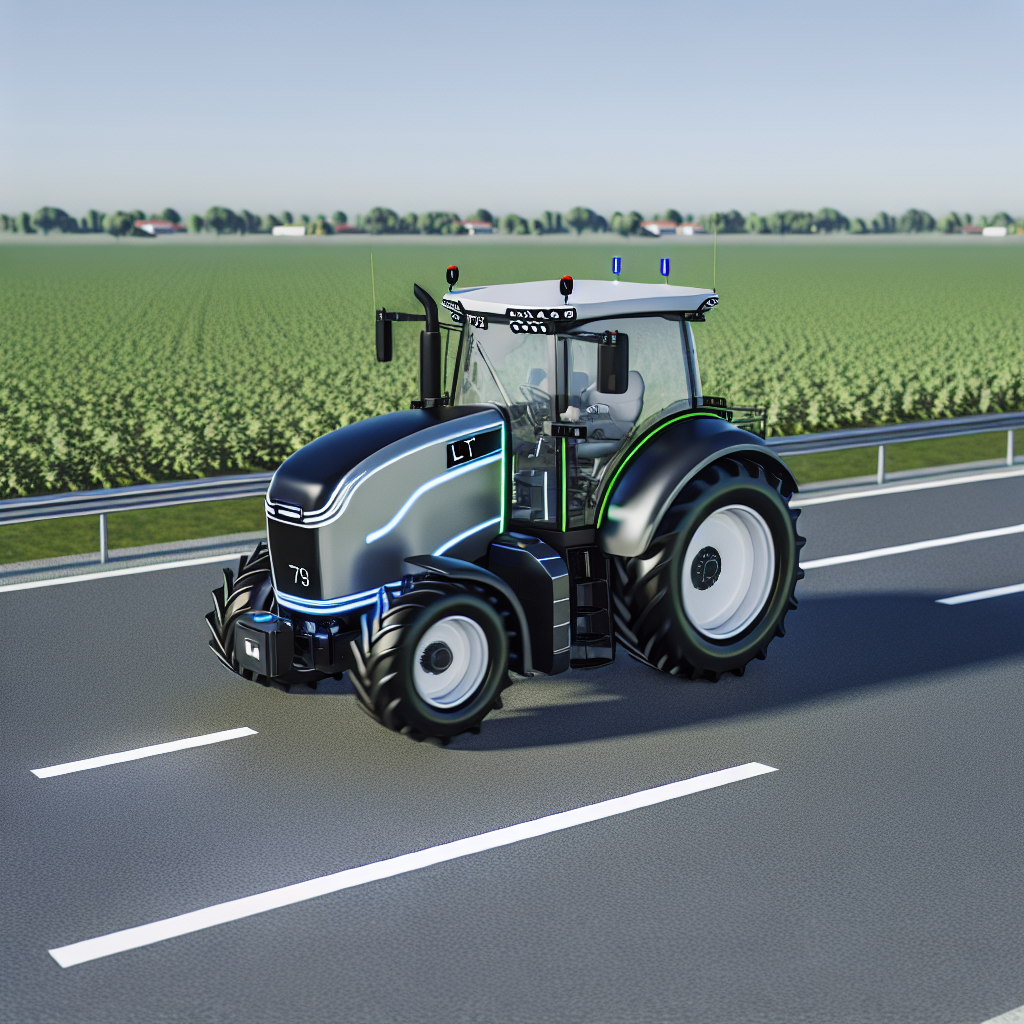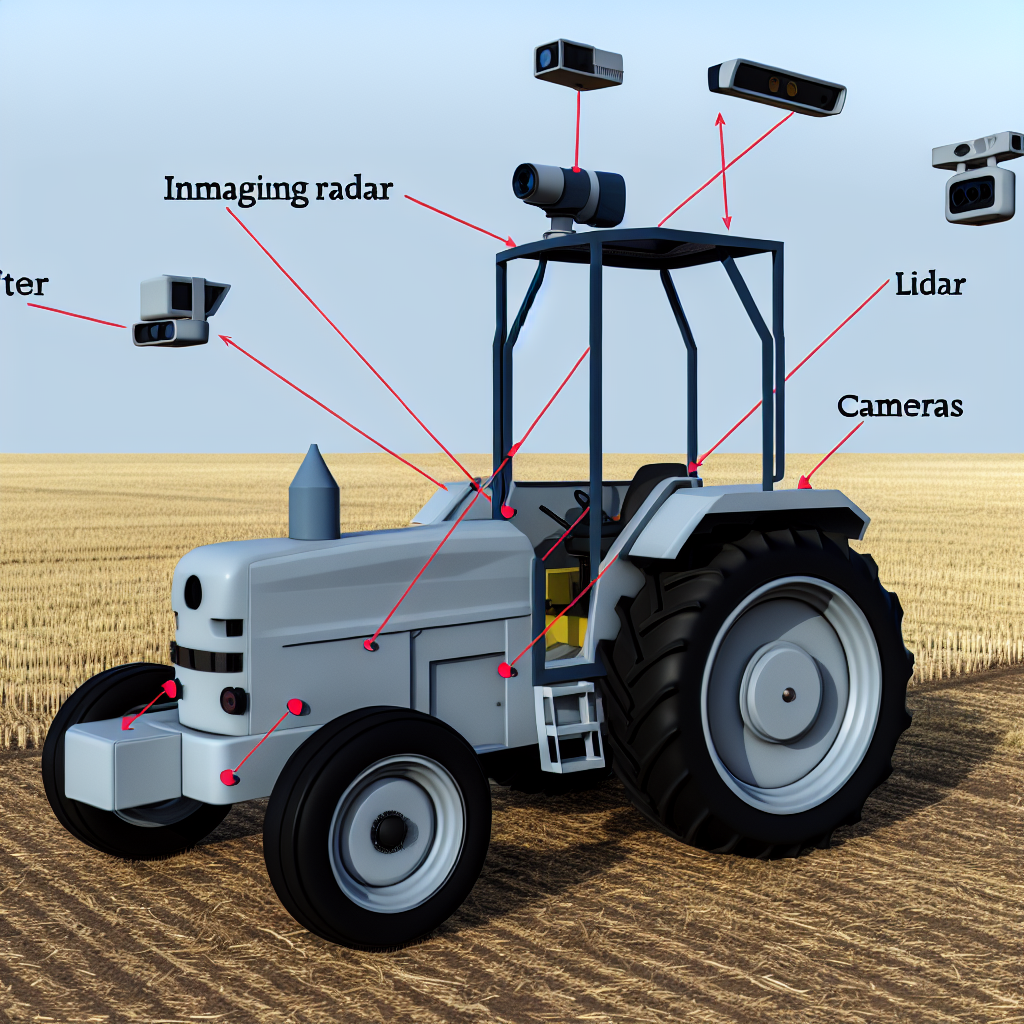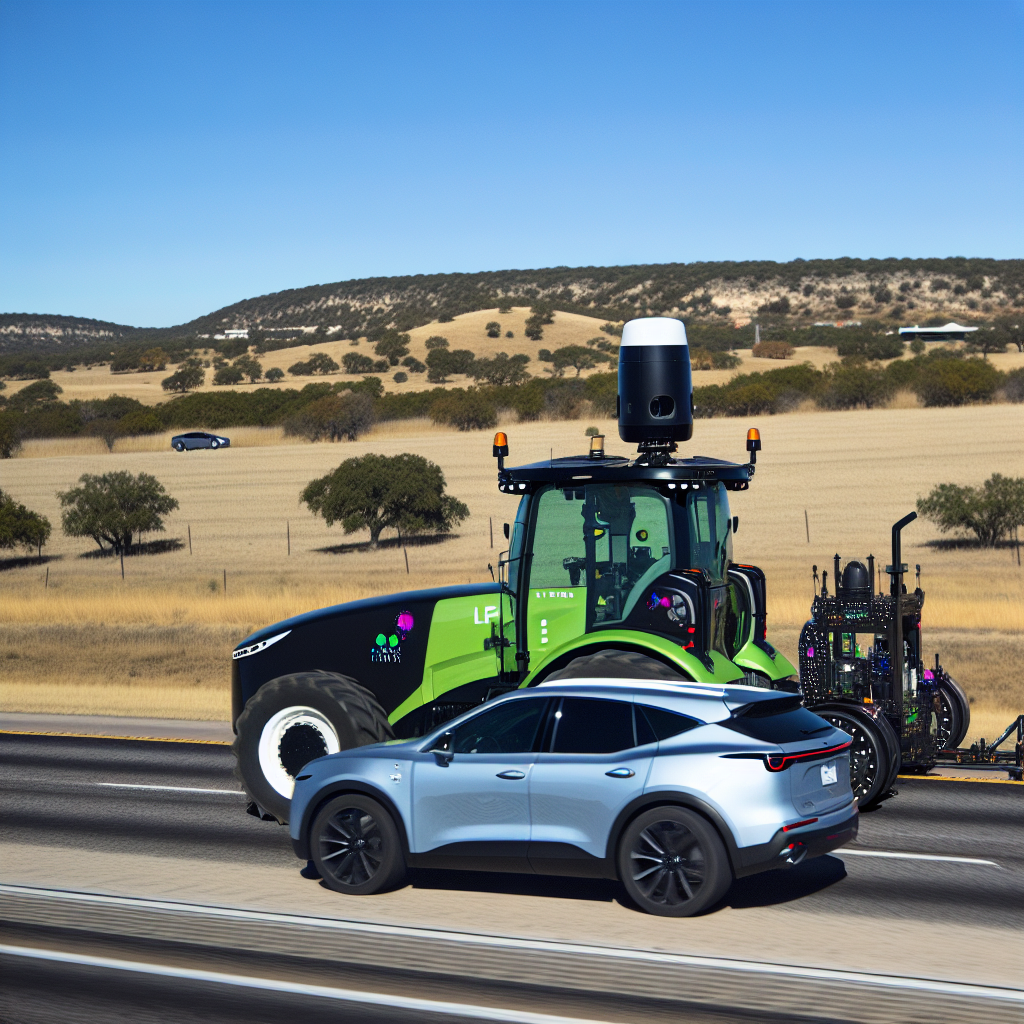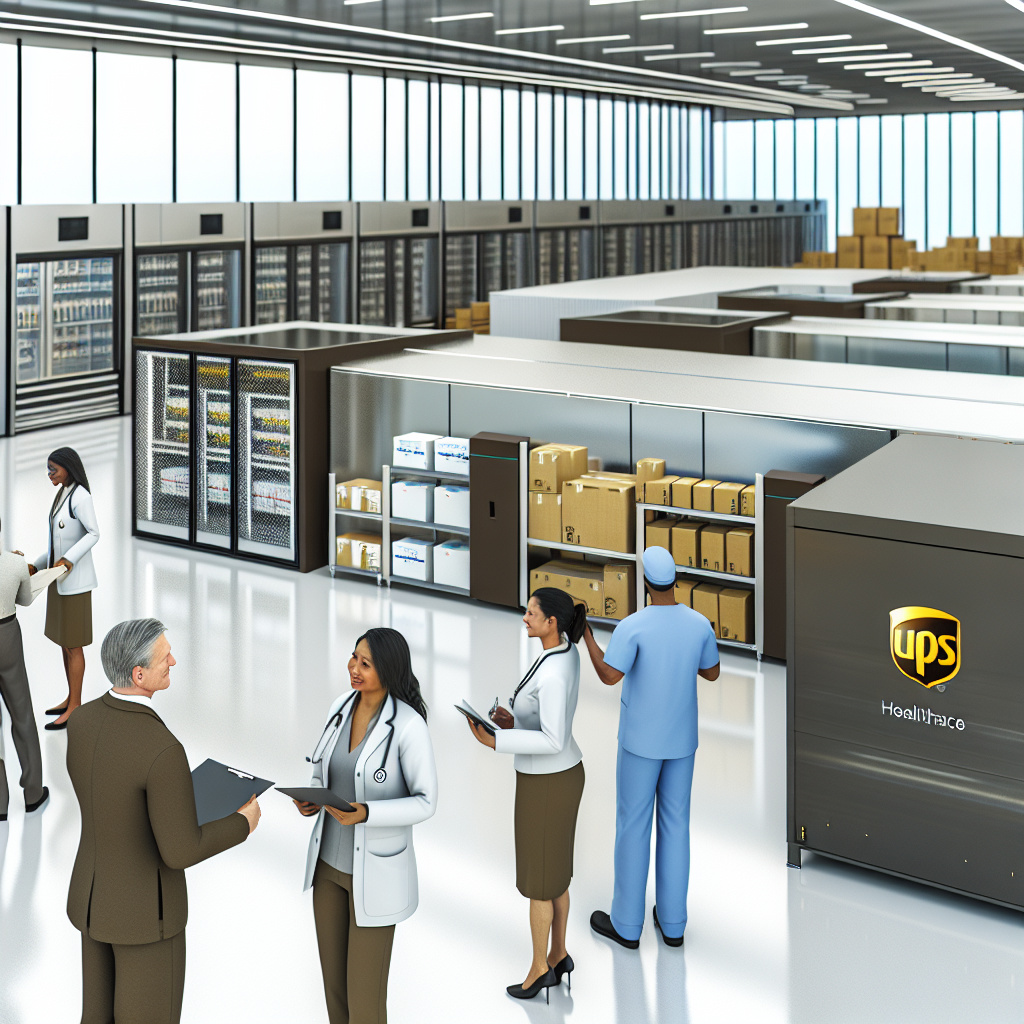The rise of autonomous trucks marks a significant turning point in logistics and transportation, promising to reshape how goods are moved across the country. As the industry races toward greater efficiency, safety, and productivity, key partnerships are paving the way for practical applications of this technology. One such collaboration is between International and PlusAI, which has recently launched an ambitious pilot program featuring the autonomous LT Series tractor.
This initiative, conducted along the bustling Interstate-35 corridor in Texas, not only showcases advanced capabilities but also brings us closer to realizing the potential of autonomous vehicles in real-world settings. With cutting-edge technology such as imaging radar, lidar, and a sophisticated sensor suite, this program aims to demonstrate the commercial viability of these systems while enhancing operational efficiency and customer satisfaction.
As we delve deeper into the advancements in this exciting arena, we uncover the impact that such innovations can have on the future of transport and logistics.


Pilot Program Details
The customer fleet trials for the autonomous LT Series tractor initiated by International and PlusAI are currently taking place in Texas, specifically along the significant transportation artery of the Interstate-35 corridor. This corridor is a vital route that connects major cities, including Laredo and Dallas, making it an ideal testing ground for autonomous vehicles meant to reshape logistics across the nation.
The trials encompass real-world applications of the LT Series tractor, equipped with a sophisticated array of sensors, including imaging radar, lidar, and cameras that provide 360-degree vision capabilities. This advanced sensor suite allows the vehicles to navigate various operational scenarios safely and efficiently.
One key objective of these trials is to evaluate the operational performance of the autonomous trucks in mixed traffic conditions. By incorporating the Interstate-35 corridor, which features a blend of urban and rural environments as well as heavy truck traffic, the initiative aims to demonstrate the reliability, safety, and efficiency of autonomous technology in a dynamic setting.
Additionally, the trials are designed to gather comprehensive data on how the autonomous trucks perform across different scenarios, including varying weather conditions and road types. Insights gained from this pilot will help refine the technology and validate its commercial viability, ensuring that it meets the rigorous demands of the logistics industry.
The focus of the program is also on enhancing customer experience by providing solutions that are not only innovative but also lead to significant operational cost savings. As articulated by Tobias Glitterstam, the chief strategy and transformation officer,
“This pilot program is a big step toward seamless digital operations that are designed to deliver an exceptional customer experience. We are proving the commercial viability of autonomous technologies and providing innovative solutions that improve safety, efficiency, and the bottom line.”
Overall, these fleet trials represent a crucial step forward in the journey toward fully integrating autonomous vehicles into the logistics ecosystem, showcasing the potential for increased efficiency and effectiveness in modern transportation.
| Technology | Description | Range | Advantages | Limitations |
|---|---|---|---|---|
| Imaging Radar | Uses radio waves to detect objects. | Up to 200 m | Works well in various weather conditions, less affected by rain or fog | Limited resolution, may struggle with small objects |
| Lidar | Uses laser light to create a 3D map. | Up to 100 m | High accuracy in object detection and mapping | Expensive, performance can decrease in heavy rain or fog |
| Cameras | Standard optical cameras capturing images. | Up to 100 m | Can recognize road signs, lane lines, and colors | Limited performance at night or in low-light conditions |
| Ultrasonic Sensors | Measures distance using sound waves. | Short-range | Good for close-object detection (parking, low-speed maneuvers) | Not suitable for long-range detection, limited environmental resilience |
| GPS | Provides location data. | Global | Essential for navigation, works in real-time | Requires clear view of the sky, can struggle in urban canyons |
Technological Advancements
The autonomous LT Series tractor represents a significant leap forward in the realm of transportation technology, particularly with features such as the S13 Integrated powertrain and AI-based SuperDrive. These advancements are not merely modifications but revolutionary enhancements that are set to redefine the standards for safety, efficiency, and reliability in the logistics industry.
One of the standout components of the LT Series is its S13 Integrated powertrain. This seamless fusion of power and control technology ensures that the tractor operates at optimal performance levels in various conditions. The integrated powertrain offers improved energy efficiency, enabling the truck to maximize its fuel economy while reducing its emissions. This results not only in cost savings for fleet operators but also contributes towards a more environmentally friendly operational approach.
Complementing the S13 powertrain is the AI-based SuperDrive system, which leverages advanced artificial intelligence to manage vehicle operations autonomously. The SuperDrive utilizes real-time data analytics to enhance decision-making processes within the truck, allowing it to adapt to changing traffic conditions and potential obstacles more effectively than traditional systems. This intelligent system improves overall safety by minimizing the risk of human error and enabling quick responses to dynamic environments. Moreover, the AI features include predictive maintenance capabilities, which help identify potential issues before they become significant problems, thus increasing the reliability of the vehicle.
Together, the S13 Integrated powertrain and AI-based SuperDrive enhance the safety of the LT Series tractor by providing comprehensive situational awareness. The truck is equipped with an advanced sensor suite that includes imaging radar, lidar, and cameras, delivering 360-degree visibility. This comprehensive perception allows for better obstacle detection and avoidance, ensuring safer operations in various driving scenarios. The combination of these technologies makes the autonomous LT Series tractor not only a viable replacement for conventional trucks but also a pioneering force in the future of transport solutions.
In essence, these technological advancements not only elevate the performance metrics of the autonomous LT Series tractor but also represent a crucial step toward the widespread adoption of autonomous vehicles in the industry. By enhancing safety, efficiency, and reliability, these innovations help pave the way for a new era in logistics that prioritizes both operational excellence and sustainability.
Insightful Perspectives
Tobias Glitterstam, the chief strategy and transformation officer, emphasized the transformative potential of the pilot program by stating, “This pilot program is a big step toward seamless digital operations that are designed to deliver an exceptional customer experience. We are proving the commercial viability of autonomous technologies and providing innovative solutions that improve safety, efficiency, and the bottom line.” This statement underscores the commitment of International and PlusAI to not only advance technology but also to enhance customer satisfaction through operational excellence.
The evolution of customer experience in logistics hinges on such breakthroughs, aligning perfectly with business goals and the growing demand for efficiency in the transportation sector.
Potential Impact
The pilot program launched by International and PlusAI signifies more than just a technological advancement—it heralds a new chapter in the logistics and transportation sectors. As the autonomous LT Series tractor begins its trials along the Interstate-35 corridor, it holds the promise of transforming various facets of the industry. Here’s a deeper exploration of what the potential impacts could be.
Broader Implications
- Efficiency Gains: A primary aim of the pilot program is to demonstrate how autonomous vehicles can operate continuously, leading to accelerated delivery times. With the capacity to drive without required rest breaks, these trucks can ensure more consistent scheduling and reduce overall transportation times for goods. According to research, this enhanced operational capability allows logistics companies to streamline their processes and reduce waiting times at loading docks or warehouses, ultimately improving throughput.
- Safety Improvements: Safety is a crucial aspect that the pilot program targets. Autonomous vehicles are equipped with advanced radar, lidar, and camera systems, which enable real-time situational awareness. This capability minimizes the risks associated with human error—such as fatigue and distraction—exceptionally high in the trucking industry. Improved safety measures not only protect the drivers and vehicles but also reduce accident costs, which can amount to millions annually.
- Cost Reduction: The long-term benefits of adopting autonomous vehicles extend into significant operational cost savings. The pilot program aims to validate these cost efficiencies through fleet data collection, helping companies understand fuel savings and reductions in labor costs. Automated driving can lead to optimized driving patterns and lower fuel consumption, which is beneficial for both the bottom line and the environment.
Benefits for Logistics and Transportation
The expected outcomes of this pilot program resonate strongly with the growing challenges in the logistics sector, including:
- Addressing Driver Shortages: The ongoing driver shortage in the trucking industry has created a pressing need for innovative solutions. Autonomous vehicles can alleviate some demands on human drivers by taking over long-haul routes or repetitive tasks, allowing human operators to focus on more complex logistics management tasks.
- Environmental Sustainability: Training autonomous vehicles to optimize routes can contribute to lower emissions and fuel usage. These advancements align with growing environmental regulations and societal demands for greener operational practices in land transport.
Challenges to Overcome
While the pilot program showcases considerable promise, several hurdles will need to be tackled before the widespread implementation of autonomous trucking can occur:
- High Initial Costs: Acquiring the advanced technology to enable autonomous driving—such as AI systems and a sophisticated sensor suite—requires a significant financial investment, which can deter smaller logistics companies.
- Regulatory and Legal Framework: The regulatory environment surrounding autonomous vehicle operations is still evolving. Questions surrounding liability, cybersecurity, and insurance must be resolved to safeguard stakeholders involved in autonomous transport.
- Technological Limitations: Though the technology is promising, it is not without its limitations. Challenges such as adverse weather conditions, complex urban settings, and unexpected road situations pose risks that require continued development of autonomous capabilities.
In summary, the pilot program serves as a crucial step in validating the operational efficacy of autonomous trucks, aligning with the goals of improving logistics efficiency and addressing pressing sector challenges. As the program advances, it will provide valuable data to inform policy, refine technology, and potentially reshape the future landscape of transportation.
Conclusion
The pilot program initiated by International and PlusAI signifies a pivotal moment in the journey towards fully autonomous trucking. This initiative has highlighted key advances in technology, particularly with the introduction of the autonomous LT Series tractor equipped with state-of-the-art sensors such as lidar and imaging radar. Throughout the trials along the Interstate-35 corridor, the emphasis on safety, efficiency, and customer experience has been paramount. By proving the commercial viability of autonomous technologies, the program aims not only to enhance logistical efficiency but also to address significant challenges facing the industry, such as driver shortages and rising operational costs.
Looking ahead, the outcomes expected from these trials are crucial for shaping the future of autonomous trucks in the logistics ecosystem. As the data collected informs improvements and innovations, we may see a broader implementation of such technologies across the transportation sector. The potential for enhanced safety, reduced costs, and increased efficiency can transform the landscape of goods movement, paving the way for a more sustainable and technologically advanced future. The excitement surrounding this initiative is just the beginning of a transformative era in logistics, one where autonomous vehicles could very well lead the charge in revolutionizing how freight is transported across the nation.
The rise of autonomous trucks marks a significant turning point in logistics and transportation, promising to reshape how goods are moved across the country. As the industry races toward greater efficiency, safety, and productivity, key partnerships such as the one between International and PlusAI serve as a foundation for practical applications of this technology. This collaboration has recently rolled out an ambitious pilot program featuring the autonomous LT Series tractor, conducted along the bustling Interstate-35 corridor in Texas. Not only does this initiative showcase advanced capabilities, but it also brings us closer to realizing the potential of autonomous vehicles in real-world settings.
Employing cutting-edge technology, including imaging radar, lidar, and a sophisticated sensor suite, this program aims to demonstrate the commercial viability of these systems while enhancing operational efficiency and customer satisfaction. As we delve deeper into the advancements in this exciting arena, we uncover the impact that such innovations can have on the future of transport and logistics.
Pilot Program Details
The customer fleet trials for the autonomous LT Series tractor initiated by International and PlusAI are currently taking place in Texas, specifically along the significant transportation artery of the Interstate-35 corridor. This corridor is a vital route that connects major cities, including Laredo and Dallas, making it an ideal testing ground for autonomous vehicles intended to reshape logistics across the nation.
The trials encompass real-world applications of the LT Series tractor, equipped with a sophisticated array of sensors, including imaging radar, lidar, and cameras that provide 360-degree vision capabilities. This advanced sensor suite allows the vehicles to navigate various operational scenarios safely and efficiently.
One key objective of these trials is to evaluate the operational performance of the autonomous trucks in mixed traffic conditions. By incorporating the Interstate-35 corridor, which features a blend of urban and rural environments, as well as heavy truck traffic, the initiative aims to demonstrate the reliability, safety, and efficiency of autonomous technology in a dynamic setting.
Additionally, the trials are designed to gather comprehensive data on how the autonomous trucks perform across different scenarios, including varying weather conditions and road types. Insights gained from this pilot will help refine the technology and validate its commercial viability, ensuring that it meets the rigorous demands of the logistics industry.
Overall, these fleet trials represent a crucial step forward in integrating autonomous vehicles into the logistics ecosystem, showcasing the potential for increased efficiency and effectiveness in modern transportation.
Technological Advancements
The autonomous LT Series tractor represents a significant leap forward in the realm of transportation technology, particularly with features such as the S13 Integrated powertrain and AI-based SuperDrive. These advancements are not merely modifications but revolutionary enhancements that are set to redefine the standards for safety, efficiency, and reliability in the logistics industry.
One of the standout components of the LT Series is its S13 Integrated powertrain. This seamless fusion of power and control technology ensures that the tractor operates at optimal performance levels in various conditions while also providing significant fuel economy benefits. Complimenting the S13 powertrain is the AI-based SuperDrive system which utilizes advanced artificial intelligence to autonomously manage vehicle operations and adapt to changing traffic conditions, thus improving overall safety and minimizing the risk of human error.
In essence, these technological advancements not only elevate the performance metrics of the autonomous LT Series tractor but also represent a crucial step toward the widespread adoption of autonomous vehicles in the industry. By enhancing safety, efficiency, and reliability, these innovations help pave the way for a new era in logistics that prioritizes both operational excellence and sustainability.
Potential Impact
The pilot program launched by International and PlusAI signifies more than just a technological advancement—it heralds a new chapter in the logistics and transportation sectors. As the autonomous LT Series tractor begins its trials along the Interstate-35 corridor, it holds the promise of transforming various facets of the industry. Here’s a deeper exploration of what the potential impacts could be:
Broader Implications
- Efficiency Gains: A primary aim of the pilot program is to demonstrate how autonomous vehicles can operate continuously, leading to accelerated delivery times and reduced waiting times at loading docks or warehouses.
- Safety Improvements: Autonomous vehicles are equipped with advanced radar, lidar, and camera systems, minimizing the risks associated with human error and enhancing safety measures.
- Cost Reduction: The long-term benefits of adopting autonomous vehicles extend into significant operational cost savings, including fuel savings and reductions in labor costs.
- Addressing Driver Shortages: Autonomous vehicles can alleviate some demands on human drivers by managing long-haul routes or repetitive tasks, allowing human operators to focus on more complex logistics management tasks.
- Environmental Sustainability: Training autonomous vehicles to optimize routes can contribute to lower emissions and reduced fuel usage, aligning with societal demands for greener operational practices in land transport.
Conclusion
The pilot program initiated by International and PlusAI signifies a pivotal moment in the journey towards fully autonomous trucking. This initiative has highlighted key advances in technology, particularly with the introduction of the autonomous LT Series tractor equipped with state-of-the-art sensors such as lidar and imaging radar. By proving the commercial viability of autonomous technologies, the program not only aims to enhance logistical efficiency but also addresses significant challenges facing the industry, such as driver shortages and rising operational costs.


